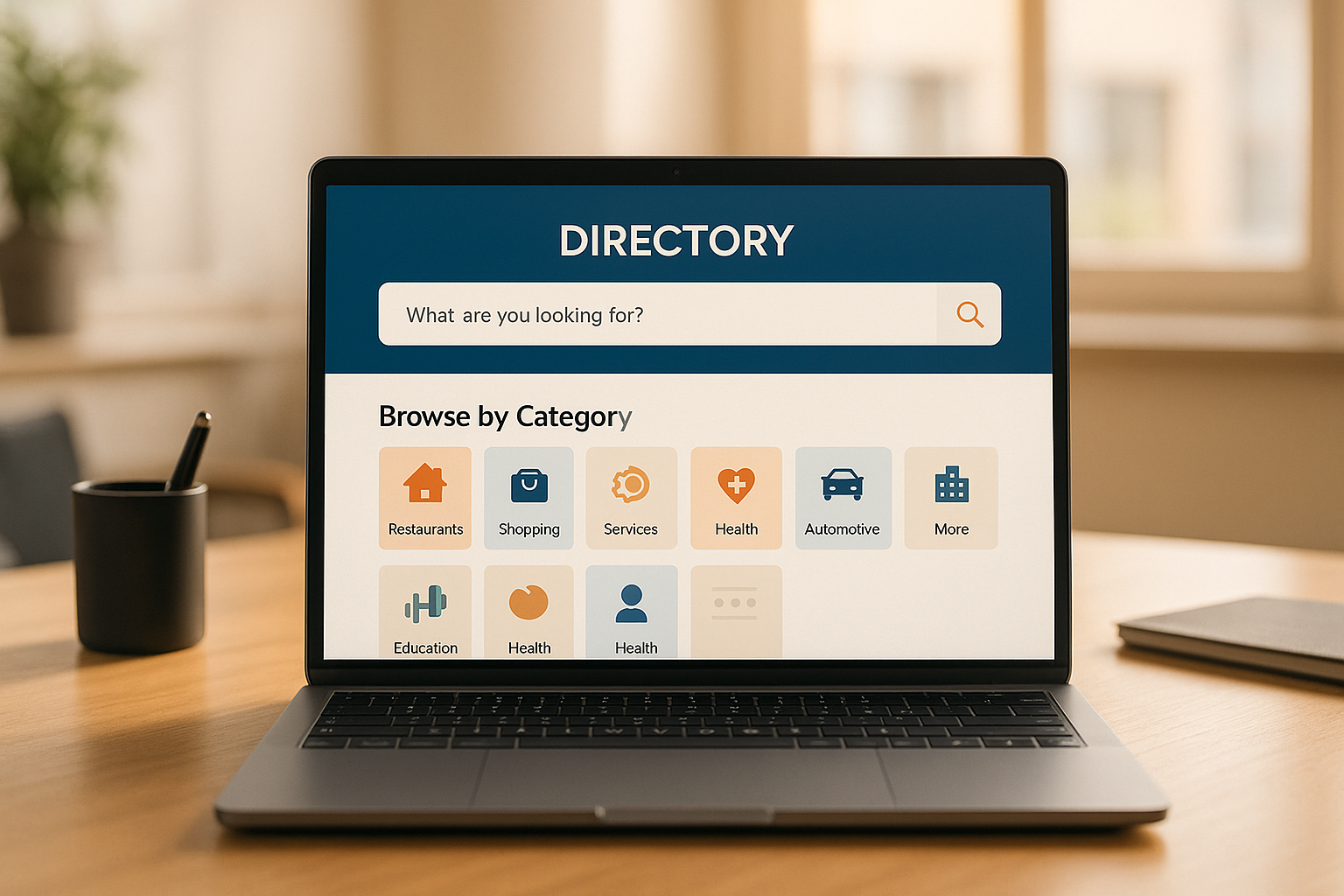
Load balancing ensures directory websites stay fast, reliable, and scalable, even during heavy traffic. By distributing incoming requests across multiple servers, it prevents slowdowns, crashes, and downtime. Here’s why it matters:
Whether your site has thousands of users or is just starting to grow, load balancing is crucial for maintaining performance and reliability. Platforms like Directify make it easier to implement and manage this technology.
Load balancing helps direct website traffic to the right servers, preventing overload and keeping everything running smoothly. Let’s break down how it works and how it manages traffic across servers.
Think of a load balancer as a traffic controller for your website. It manages incoming requests and decides where to send them based on each server's capacity and current workload.
To make these decisions, the load balancer keeps track of key server performance metrics, such as:
When someone visits your directory website, the load balancer evaluates these metrics instantly to pick the best server for the job.
Load balancers rely on algorithms to divide traffic across servers in real time, ensuring no single server gets overwhelmed. Here’s how the process works:
| Phase | Action | Purpose |
|---|---|---|
| Request Reception | Load balancer receives the visitor's request | Acts as the initial contact point |
| Health Check | Evaluates server conditions | Selects the most capable server |
| Distribution Decision | Chooses the best server using an algorithm | Keeps workloads balanced |
| Request Forwarding | Sends the request to the selected server | Ensures smooth content delivery |
| Performance Monitoring | Tracks server response metrics | Adjusts decisions dynamically |
The load balancer stays connected to all servers in the pool, constantly updating its decisions based on real-time data. If one server starts slowing down or shows signs of stress, traffic is quickly redirected to another, more capable server.
For directory websites, this system ensures visitors enjoy a consistently smooth experience, no matter:
This dynamic traffic management keeps your website running efficiently under all conditions.
Load balancing doesn’t just manage traffic - it actively improves how well your system performs.
By evenly distributing requests across servers, load balancing keeps your system running smoothly, even as traffic increases. It ensures searches and submissions remain fast and uninterrupted, even during busy periods. Here's how it works:
As your directory grows - with more listings and users - load balancing ensures your system can handle the increased demand. Here's a closer look at how it supports growth:
| Growth Challenge | Role of Load Balancing |
|---|---|
| High User Traffic | Spreads visitor requests across servers |
| Larger Data Volumes | Manages database queries for faster results |
| More Simultaneous Users | Handles more concurrent sessions seamlessly |
Load balancing plays a key role in keeping your site online by proactively addressing server issues. It ensures your directory stays accessible through these mechanisms:
1. Health Monitoring
Load balancers continuously check server health, looking at response times, error rates, and resource usage to ensure servers are ready to handle traffic.
2. Automatic Failover
If a server struggles or fails, the load balancer automatically redirects traffic to healthy servers. This keeps your services running smoothly without users noticing any disruptions.
Load balancing plays a key role in managing traffic efficiently and boosting the performance of directory websites.
This approach tracks the number of active connections on each server and routes new requests to servers with available capacity. It's especially useful for directory sites where users perform multiple actions, such as searching listings, browsing categories, or submitting content.
Basic traffic splitting spreads incoming requests evenly across all servers. Weighted splitting, on the other hand, prioritizes more powerful servers by assigning them a higher share of the traffic. The system adjusts these distributions in real time based on server performance metrics, ensuring smooth and responsive user experiences.
These methods integrate easily with modern directory platforms. For instance, if you're using Directify to build your site, its built-in performance tools align with these techniques, allowing you to focus on scaling your platform instead of worrying about server management.
Once you understand how load balancing works, the next move is setting it up to match your site's traffic patterns and server requirements.
Start by evaluating your site's traffic and server capacity. Pay attention to peak visitor counts, page load times, and resource consumption. Look at metrics like the number of concurrent users, search activity, and database usage to decide how to distribute server loads effectively.
Keeping an eye on performance is crucial. Regularly check server response times, error rates, and resource usage to catch and address problems quickly. Here are some key actions to take:
These measures ensure your system runs smoothly and adapts quickly to any changes in demand.
Directify's built-in analytics tools make monitoring and adjustments easier, helping you refine your setup as your site scales.
Load balancing plays a key role in how directory websites manage traffic and deliver content. By spreading requests across multiple servers, it ensures better performance and scalability. This helps directory sites stay fast during traffic spikes and reduces downtime, which can impact both user experience and revenue.
Here’s how load balancing improves critical aspects of directory websites:
These advantages make load balancing a smart investment for directory site owners. As directories grow and attract more users, having scalable and reliable infrastructure becomes essential.
Platforms like Directify simplify this process by managing the technical side of load balancing. This allows site owners to focus on expanding their directories while ensuring their platforms remain fast and dependable, even as traffic increases.
Load balancing improves the performance of directory websites by distributing incoming traffic evenly across multiple servers. This prevents any single server from being overwhelmed, ensuring that your website remains responsive even during peak traffic times.
By managing server workloads effectively, load balancing helps reduce page load times, minimize downtime, and maintain a seamless user experience. For directory websites, where users frequently search, browse, and interact with listings, this ensures smooth access to data and consistent performance.
Load balancers monitor several key performance metrics to ensure smooth and efficient traffic distribution across servers. These include CPU usage, memory utilization, server response time, and network latency. By analyzing these metrics, load balancers can identify potential bottlenecks and redirect traffic to prevent server overloads.
This ensures that directory websites maintain fast load times, consistent uptime, and a seamless user experience even during high-traffic periods.
Load balancing ensures that a directory website can handle unexpected traffic spikes by distributing incoming requests across multiple servers. This prevents any single server from becoming overwhelmed, which helps maintain fast loading times and a smooth user experience.
By automatically adjusting to traffic demands, load balancing eliminates the need for manual intervention during peak periods. It also improves reliability by rerouting traffic if a server goes offline, ensuring your website stays accessible to users at all times.
Start creating your professional directory website today with Directify's no-code platform.
Get Started Free





